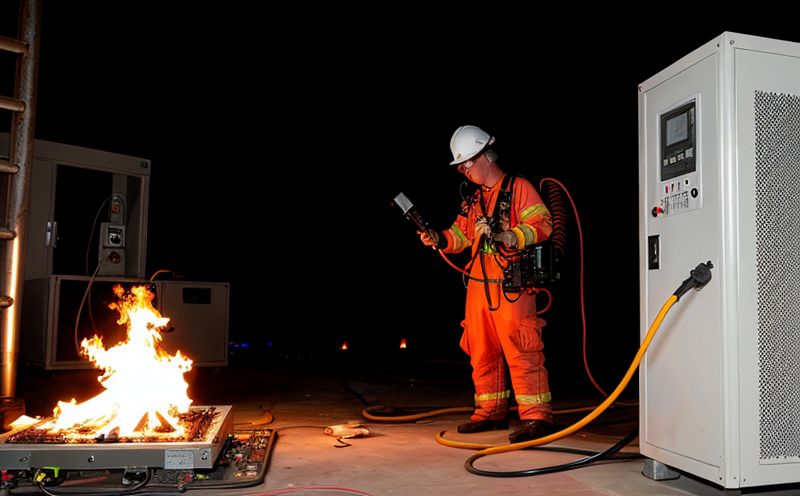Fire Performance Testing of Electronic Enclosures
The fire performance testing of electronic enclosures is a critical aspect of ensuring product safety and compliance with international standards. This service evaluates the ability of an enclosure to resist ignition, prevent the spread of flame, and maintain integrity under fire exposure conditions. This test ensures that in case of a fire, the enclosure can protect its contents from damage or further hazard.
Electrical and electronic equipment enclosures are often subject to harsh environmental conditions, including potential fire hazards. The fire performance testing assesses how well these enclosures perform when exposed to flame sources such as those found in industrial settings or during electrical malfunctions. By performing this test, manufacturers can ensure their products meet the necessary regulatory requirements while also providing enhanced safety for end-users.
The testing process typically involves exposing a specimen of the enclosure material to specified fire conditions, monitoring its behavior over time, and evaluating key performance metrics like flame spread rate, heat release rate, and smoke generation. These parameters are crucial in determining whether an enclosure can safely contain electronic components during fires without posing additional risks.
Fire performance testing is essential not only for meeting regulatory requirements but also for protecting consumer safety. In today’s interconnected world, many devices rely on electronics that could potentially be exposed to fire hazards due to design flaws or operational errors. Ensuring these enclosures meet rigorous fire safety standards helps prevent catastrophic failures and reduces the risk of injury.
For quality managers, compliance officers, R&D engineers, and procurement teams responsible for selecting suppliers, understanding this testing process is vital. It allows them to make informed decisions about product design improvements and supplier selection based on proven performance data rather than guesswork or anecdotal evidence.
Applied Standards
| Standard | Description |
|---|---|
| IEC 60335-2-12 | Fire safety requirements for household and similar electric appliances, part 2-12: Fire performance of enclosures |
| UL 746B | Standard for fire resistance of enclosures containing electrical equipment or components |
| ASTM E2580 | Test method for flame spread and smoke developed by specified products using a vertical tunnel apparatus |
Benefits
Performing fire performance testing on electronic enclosures brings numerous benefits to manufacturers and end-users alike:
- Ensures compliance with international safety regulations.
- Enhances product reliability by identifying potential weaknesses before they become hazards.
- Promotes trust among consumers who rely on these devices for critical functions during emergencies.
- Aids in meeting insurance requirements and potentially reducing premiums.
- Facilitates easier market entry into regions with stringent safety laws.
Why Choose This Test
- It provides comprehensive data on the behavior of enclosures under fire conditions.
- The test helps identify design improvements needed to enhance safety features.
- Avoids costly recalls and product liability claims by catching issues early in development stages.
- Promotes brand reputation through demonstrated commitment to high-quality, safe products.
- Supports continuous improvement efforts within manufacturing processes.





